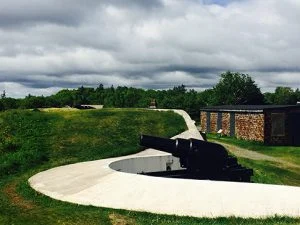
History
Parks Canada places commemorating the First World War
Sites across Canada honouring the war
- 1412 words
- 6 minutes
This article is over 5 years old and may contain outdated information.
History

It seems like Canadians have been giving thanks on the second weekend of October for ages. But that wasn’t always the case.
Thanksgiving and Armistice Day used to be celebrated on the same weekend in November. The first time the two holidays were held together was Nov. 7, 1921.
However, the duel celebrations were unpopular. The public felt that celebrating Thanksgiving, with its food, sports and other amusements, didn’t correspond with remembering soldiers who died at war and having solemn ceremonies at memorials and cenotaphs.
Despite the grumblings, Armistice Day and Thanksgiving continued together for another 10 years, held on the Monday before Nov. 11. Although it wasn’t an official holiday, many rebelled by celebrating Armistice Day on Nov. 11, and large crowds attended at local cenotaphs and on Ottawa’s Parliament Hill.
In 1925, the Canadian Legion in Winnipeg began a campaign to have Nov. 11 declared the official Armistice Day.
Finally in 1931, the government passed legislation moving Thanksgiving Day to October and declaring Nov. 11, the anniversary of Armistice Day, as a national military memorial day. The name of the day was changed to Remembrance Day to put the emphasis on remembering soldiers who gave their lives, rather than on the Armistice in the First World War, which was more of a political event.
Beginning Nov. 11, 1931, Remembrance Day was born.

Are you passionate about Canadian geography?
You can support Canadian Geographic in 3 ways:

This story is from the July/August 2014 Issue

History
Sites across Canada honouring the war

History
Not all is fair in love and war, but the love of war art is clear in two new exhibits opening today at the

History
Soldiers, descendants of Loyalists and history buffs recreate a battle to demonstrate why the War of 1812 is still important today.

History
The little-known story of the 1918 Spanish Flu and how we're preparing for the next great pandemic